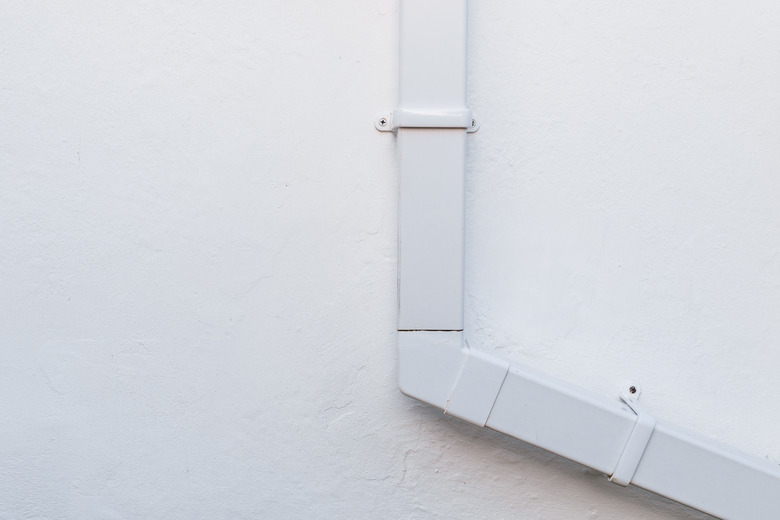The Proper Angle For Water Runoff On A Flat Roof
The industrial age brought about economical building methods and the prevalence of flat roof construction. It is a simple and cost-effective method to use for certain commercial construction buildings like warehouses. Although a flat roof appears to be level, getting water off a flat roof requires a minimum slope, and installing the proper flat roof angle is essential for avoiding water problems in the future.
Flat Roof Slope
Flat Roof Slope
The slope of a roof, or "pitch," is determined by how many inches the roof rises over 1 foot or 12 inches. An example for a steep sloped roof is 8:12. This means that the rise of the slope goes up or down 8 inches for every 12 inches. To put it in perspective, the angle of this slope would be around 30 degrees.
Flat Roof Slope Minimum
Flat Roof Slope Minimum
According to the International Building Code, the typical built-up flat roof that uses tar or asphalt goes by the guideline that for every foot (12 inches) of a flat roof, a minimum of ¼ inch must step up or down. This is the basis for calculating the angle, which is approximately a 1.19-degree slope. This angle may need to change if you choose an alternative building material for the membrane of the roof. A common slope used that covers most materials is 2:12, which means that for every foot, the roof steps up or down 2 inches.
Designing a Flat Roof for Runoff
Designing a Flat Roof for Runoff
How water runs off a roof depends on the amount of rainfall and how quickly it needs to drain. The drainage system of any roof can be located at the edge or in the middle of the roof. For a large roof, it is recommended to have drains placed at multiple locations within the area of the roof. Increasing the angle of a flat roof will always increase the speed of water movement across the surface.
For flat roof drainage, where you place your drains, scuppers and the final material of the roofing is more important. The angle is not significant enough to prevent water from pooling on the surface. To keep damage like leaks from occurring, water should not stand on a flat roof for more than 48 hours.
For areas that have heavy snow or frequent torrential downpours, a flat roof can be problematic. Consider the location of the drains, additional drainage measures and the slope leading to these locations. The structure below must also be able to carry the increased loads when there is standing water or snow.
